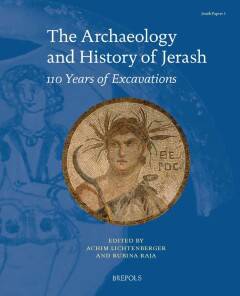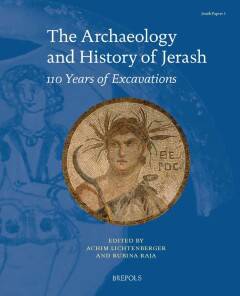
- Retrait gratuit dans votre magasin Club
- 7.000.000 titres dans notre catalogue
- Payer en toute sécurité
- Toujours un magasin près de chez vous
- Retrait gratuit dans votre magasin Club
- 7.000.0000 titres dans notre catalogue
- Payer en toute sécurité
- Toujours un magasin près de chez vous
The Archaeology and History of Jerash
110 Years of Excavations
Achim Lichtenberger
Livre broché | Anglais
293,45 €
+ 586 points
Description
110 years ago, in 1907, the first excavations were undertaken in the Decapolis city Gerasa. It was the beginning of an intensive and continuous period of research in this major city of the Decapolis. Large-scale excavations were undertaken in the 1920s and 1930s after the institution of the mandate. These were followed by several international projects, most noteworthy the large initiative begun in the late 1970s, Jerash Archaeological Project. From the outset of excavations within the urban space of Jerash, the Greco-Roman city Gerasa with its public monuments along the cardo was one of the foci. Furthermore, Christian churches found special interest in the early years as well as in later periods. In the last decennia, research interests have shifted, moving away from the large public monuments to the areas beyond the city centre and chronological focus left behind the classical and early Christian periods and encompassed the later periods, in particular the Early and Middle Islamic periods. Also, the restoration and preservation of the monuments and the presentation to the public have become important issues but also challenges. These changed interests reflect current questions of archaeology, which have intensified the view of long-term transformations and the transitional periods as well as relations between city and hinterland. In order to move the understanding of the development of Jerash forward, this volume brings together researchers who have worked in Jerash over the last decades. This communal effort pushes the contextualisation of this important site further within a local, regional as well as wider framework of the Hellenistic, Roman, Islamic and Medieval worlds.
Spécifications
Parties prenantes
- Auteur(s) :
- Editeur:
Contenu
- Nombre de pages :
- 280
- Langue:
- Anglais
Caractéristiques
- EAN:
- 9782503578200
- Date de parution :
- 31-10-18
- Format:
- Livre broché
- Format numérique:
- Trade paperback (VS)
- Dimensions :
- 168 mm x 246 mm
- Poids :
- 1315 g

Les avis
Nous publions uniquement les avis qui respectent les conditions requises. Consultez nos conditions pour les avis.






